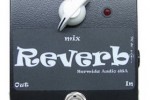I think the point is that even most people who are into sound are unaware of the differences in sound “quality.” As an engineer, I have to come up with operational definitions for things all the time — my sanity depends on it.
So what is quality? I would attest that there are multiple elements involved, and all of them require accuracy. You need accurate frequency response and accurate dynamic response. There is some added fun in that different volumes by their nature play games with perceived loudness of different frequencies (google “equal loudness countour” for a nice nerdy treatment on Wikipedia).
An equal-loudness contour is a measure of sound pressure (dB SPL), over the frequency spectrum, for which a listener perceives a constant loudness when presented with pure steady tones. — Wikipedia
 Every element of your audio system from the D/A conversion to the amplification to the speakers to the air to your ears and your inner workings to your own consciousness plays an important role in the sound.
Every element of your audio system from the D/A conversion to the amplification to the speakers to the air to your ears and your inner workings to your own consciousness plays an important role in the sound.
With regards to dynamics, many people equate more compression with better quality — hence the loudness wars. I would say some compression makes things sound better, but there is a definite threshold — a shifting one — that is too much! When whispers are indistinguishable from screams (volume-wise), it has gone too far (club-pop much?).
Whether or not other people think it is possible to hear the difference is immaterial. The high frequencies were less detailed in the 128, and the dynamics were a touch more squished. If you still have your hearing range, and you know what to listen for, it is there.





